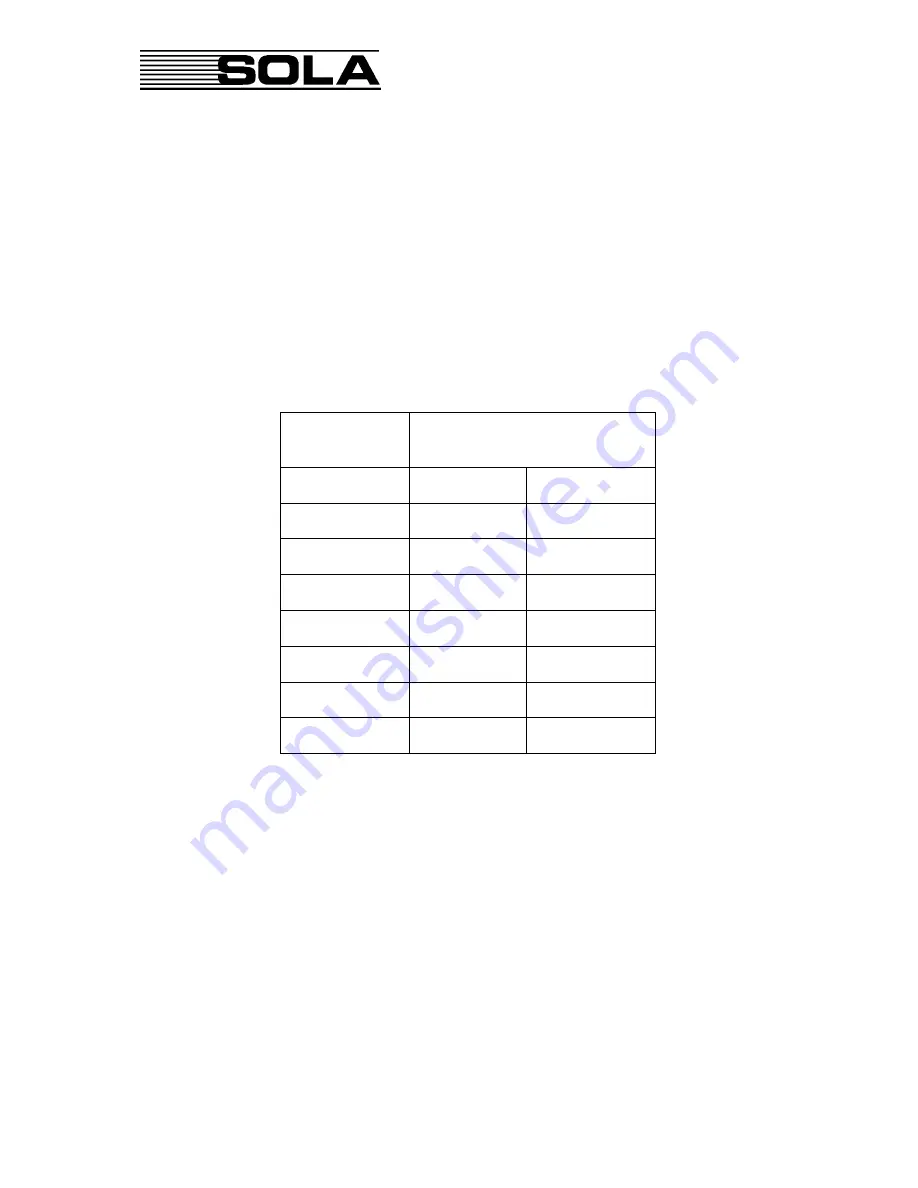
Series 200 Power Conditioners
Instruction Manual
2.3
SELECTION OF INPUT CIRCUIT BREAKERS
As with all transformer based equipment, ferroresonant transformers are characterised by an
inrush current when switched on. For this reason it is recommended that delayed-trip type
circuit breakers are used when switching power conditioner circuits. In Australia the Heinemann
CF1 and CF3 (for 1 and 3 phase circuits respectively) breakers are appropriate. These are
hydraulic/magnetic type breakers with variable sensitivity. A “Curve 1” type circuit breaker will
provide the correct protection characteristics whilst delaying the trip function during the
transformer in-rush. Select the breaker appropriate to the next current rating above the nominal
rating of the power conditioner.
Table 2 is a guide for cabling between the circuit breaker and power conditioner. The installer
must satisfy himself that the cable size is correct for the installation.
Cross
Sectional Area
Current Rating
(sq. mm.)
3 Phase
1 Phase
4
25
25
6
32
32
10
40
50
16
50
63
25
80
80
35
92
105
50
110
125
70
140
155
Table 2. Cable Selection Guide
2.4
POWER UP
When the installation has been approved by the local power authority, the power conditioner
may be energised with load equipment switches in the OFF position. A few seconds after
energisation, load equipment may be switched on. Whilst no special commissioning procedure
is required, the following may prove useful for future reference:
Using a good quality (preferably True-RMS) voltmeter and current tongs, measure and record
all input and output voltages and currents. Also record details of load equipment and running
time of the power conditioner from cold. Output voltage will be 1 or 2% higher than normal until
the unit has operated for 2 hours or more. Check output voltage against nameplate and
performance data - Section 3.1. If output voltage is incorrect, call Invensys Service on 1300 303
059
- 7 -

































